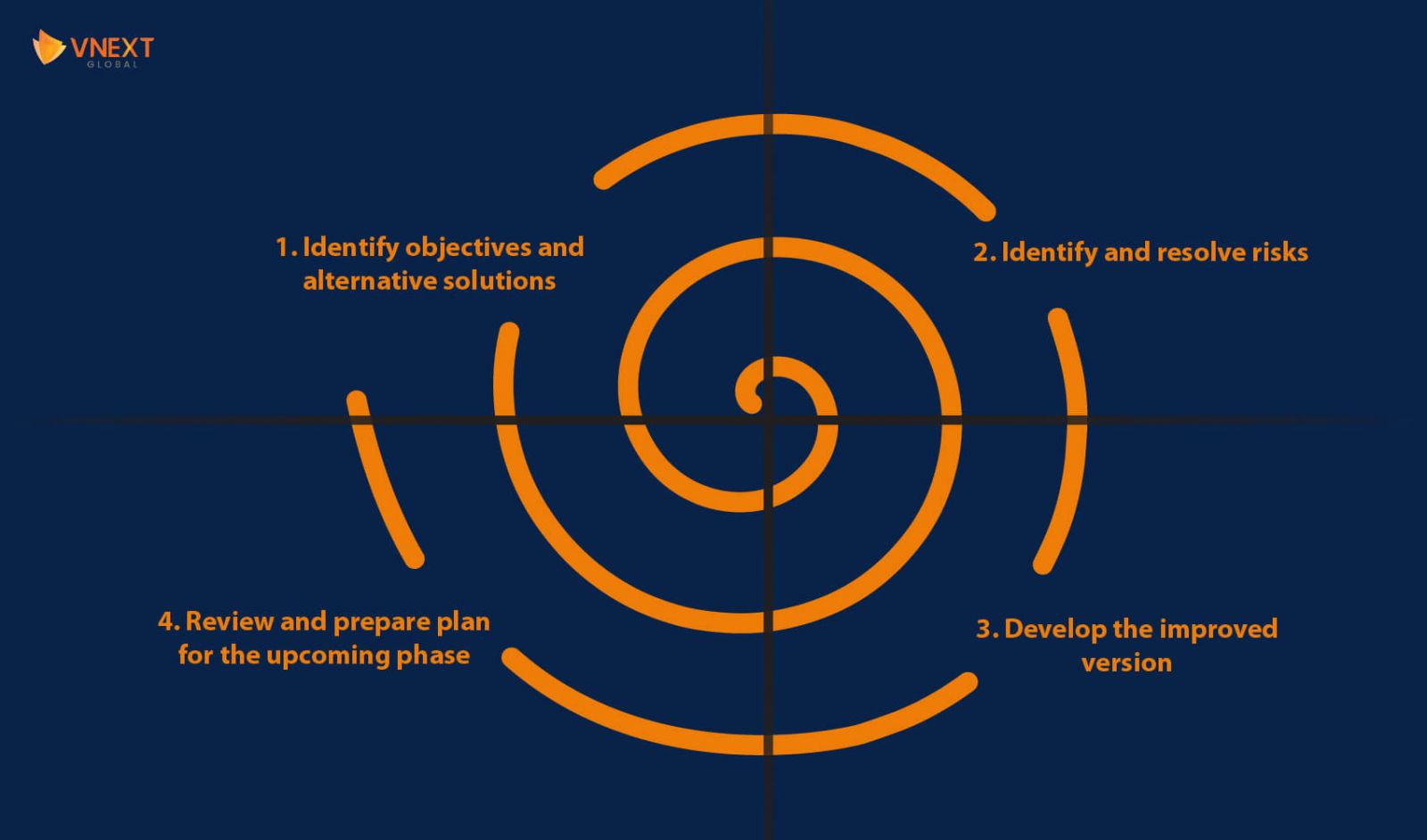Spiral Model is a part of the SDLC in which the processes are used for risk management. The model is preferred by software developers who are in charge of big, costly, and complicated projects.
The definition of Spiral Model
Spiral Model appears as a coil with many loops when being in visualization. The amount of loops used varies each project and is frequently determined by the project manager. Each spiral loop indicates a phase belonging to the software development process.
Spiral Model allows for incremental product launches and refining as well as the possibility to construct prototypes at each phase of the spiral. The model's most essential characteristic is its capacity to handle unexpected risks, which is made possible by constructing a prototype.
The main focus of Spiral Model
-
Flexibility: After work has begun, changes to the requirements may be simply adopted and implemented.
-
Spiral Model is recommended in large and complicated projects.
-
Risk handling: Spiral Model combines risk analysis and management at every stage, enhancing security and reducing the likelihood of data leaks. Risks can also be prevented by the iterative development process.
-
Client satisfaction: Clients’ feedback is encouraged in the Spiral Model. The client can examine and evaluate the software at all stages. This allows clients to express their dissatisfactions or suggest improvements before the product is completed. That can save time and cost of the project.


Steps of Spiral Model
1. Identify objectives and alternative solutions
Clients give their requirements expectations. Then, clients and the development team identify objectives and list priorities at the start of every phase. The team proposes alternative solutions possible for the phase as well.
2. Identify and resolve risks
To pick the best potential option, all viable solutions are analyzed. The team identifies risks connected with that solution, and then mitigate them using the best technique feasible. The prototype is the expected outcome of this stage.
3. Develop the improved version
Developers write code based on previous analysis. Then, testers verify all created features and fix bugs. The outcome of this stage is the new version of the software, that is tangible and improved.
4. Review and prepare plan for the upcoming phase
Clients evaluate the so-far developed version of the software and give feedback to the team. Team members take note and have ideas to implement them in the next step. In the end, a new plan for the next phase is the must-have outcome.
Read more: 8 Software Development Models You Can Apply To IT Projects
Of course, there are other approaches used in project planning, such as Kanban or XP, and you can choose one based on your needs.
If you are looking for a trusted IT partner, VNEXT Global is the ideal choice. With 14+ years of experience, we surely can help you to optimize your business digitalization within a small budget and short time. Currently, we have 400+ IT consultants and developers in Mobile App, Web App, System, Blockchain Development and Testing Services. We have provided solutions to 600+ projects in several industries for clients worldwide. We are willing to become a companion on your way to success. Please tell us when is convenient for you to have an online meeting to discuss this further. Have a nice day!












